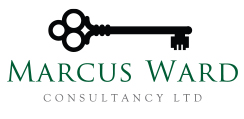Latest from the courts
In the First Tier Tribunal (FTT) case of Olive Garden Catering Company Ltd (OGC) the mian issue was whether catering which was provided to the University of Aberdeen (UOA) students was an exempt supply. The specific issue was whether the catering was a supply “closely connected to education” which in turn depended on which entity was actually making the supply to students. For exemption to apply, OGC would need to be a principal in purchasing the food and other goods and an agent of UOA (pictured above) in delivering the catering (the exemption could not apply to a supply by OGC to the students).
Background
The central issue was whether the supply of food and staff by the appellant to UOA was a single supply of catering services at the standard-rate for VAT purposes (HMRC’s case) or that the main supply was for food at the zero-rate, with the supply of staff being a separate supply and eligible for staff wages concession which was the appellant’s stance. I comment that the procurement as principal and the delivery of catering as agent is common practice in the education sector and this case focussed on whether the relevant documentation actually reflected the economic reality.
Decision
The HMRC internal VAT manual VTAXPER64300 sets out the general principles for determining the VAT treatment of supplies made under a catering contract, which in turn depend in some situations on the capacity in which the caterer supplies its service, whether as principal or agent in the agreement. Of relevance in this case were the following statements:
(1) In general, it has been established practice that agency contracts are most often used in the education sector.
(2) Under agency contracts for the provision of catering it is accepted that:
- The client makes a taxable supply of catering to the consumer, or the catering is subsumed within an overall exempt supply, eg; of education
- VAT is not charged to the client on wages of the catering staff employed at the unit
- VAT is charged on any management fee plus taxable stock and other services
- Schools may only exempt supplies which are closely related to the overall provision of education
(3) This contributes to fair competition with in-house providers, and the contract catering industry acknowledges the value of that.
In respect of the contract for the supply of catering services, UOA was the principal and OGC was the agent by reference to the control exercised over; menu specifications, pricing, and the premises in which catering was carried out. The relevant contracts set out that the terms were set by UOA and were indicative of its status as the principal in the catering contract. The judge stated that the catering contracts between UOA and OGC appeared to be an agency contract with OGC acting as the agent. Consequently, the food produced OGC and served by its staff at UOA’s halls of residence was potentially a supply of food in the course of catering that can be subsumed within the overall exempt supply of education by UOA.
Commentary
A win for the appellant, but only after comprehensive consideration of all points and the substantial detailed documentation by the judge. There has been a run of Tribunal cases on the agent/principal point (not just in education and which I have covered in previous articles) and this case serves to demonstrate that each case will be determined on its merits. There can be no blanket VAT treatment and certain factors will point one way and others to a different VAT treatment. In my experience, HMRC are always eager to challenge agent/principal treatment and it is an area which has an enormous tax impact on a business. I always recommend that any contracts/documentation which cover potential agent/principal issues are reviewed to avoid unwanted attention from HMRC. Slight adjustments to agreements often assist in reaching the desired tax treatment. Don’t leave it to chance!
